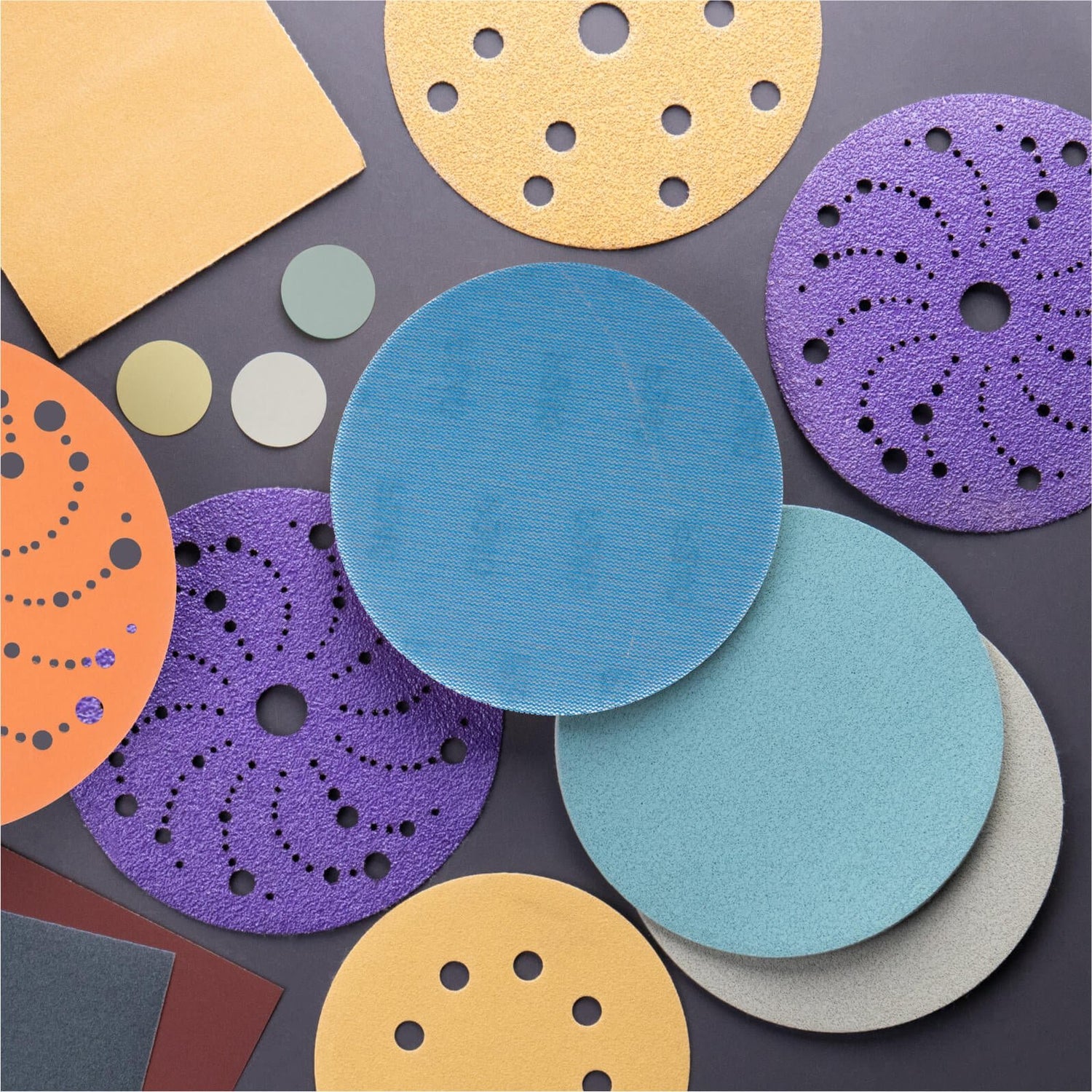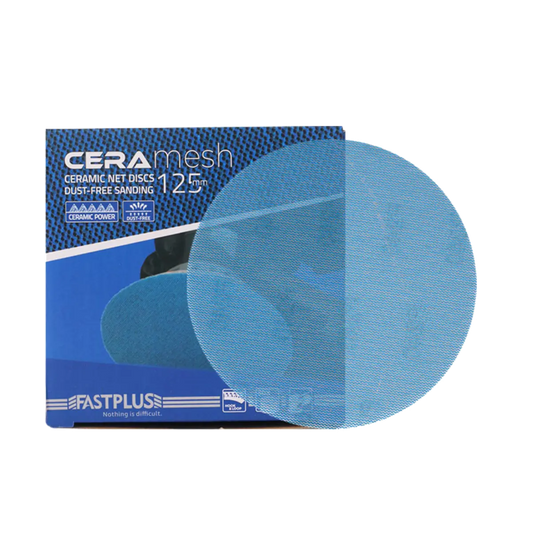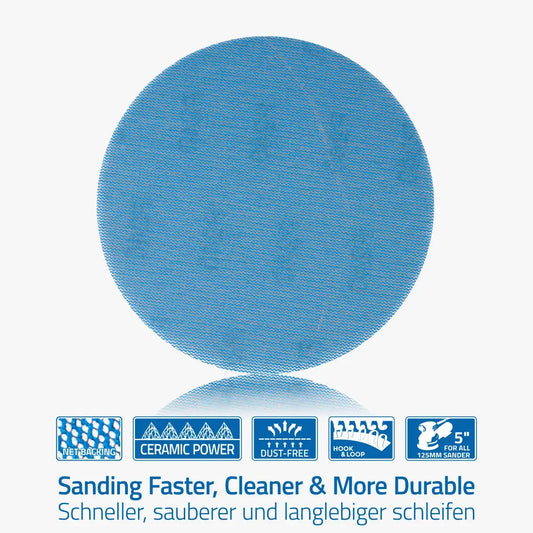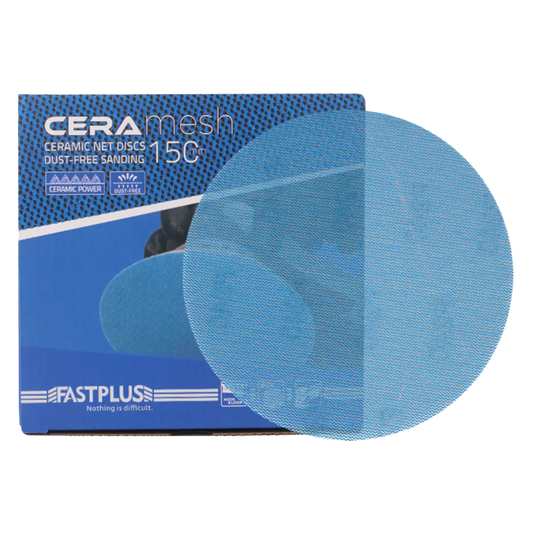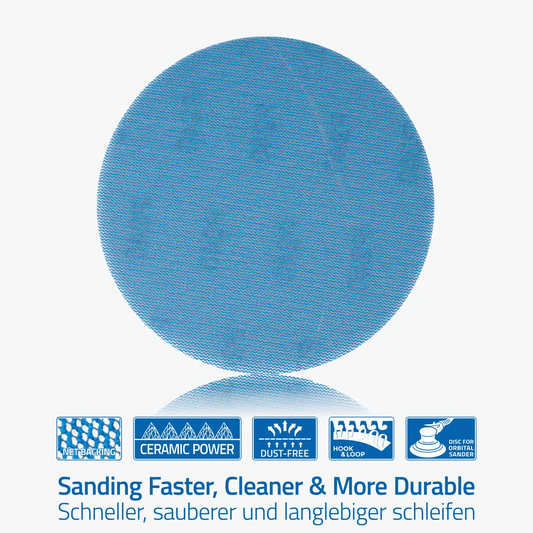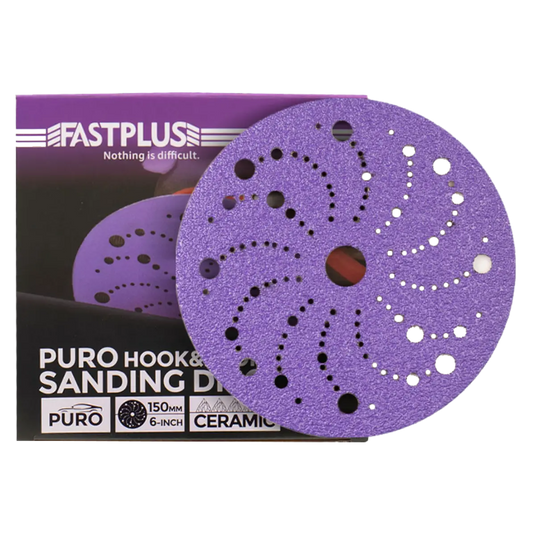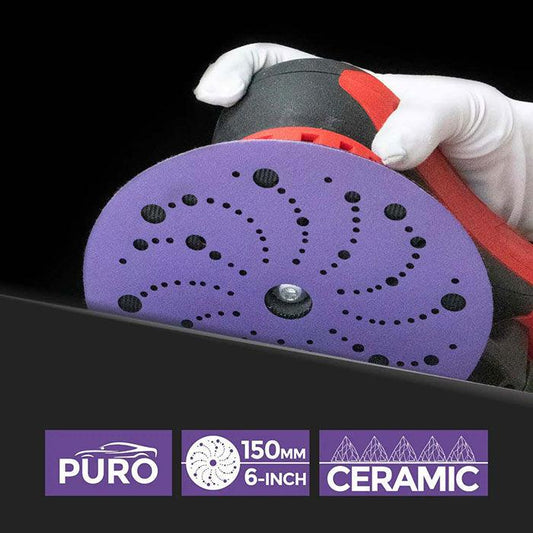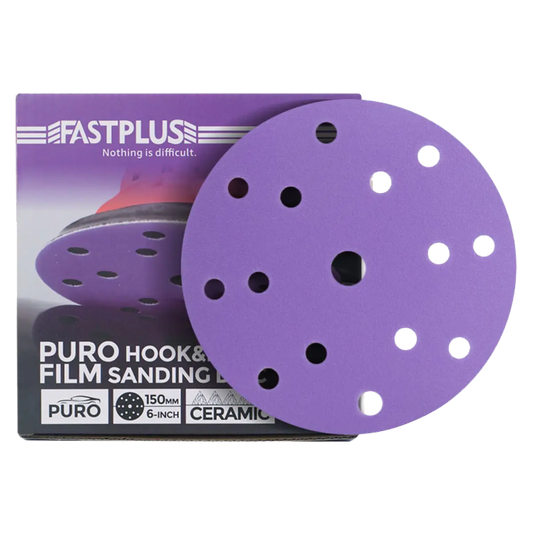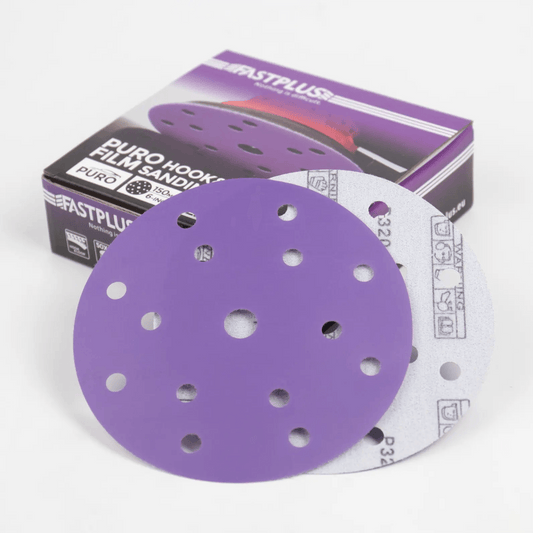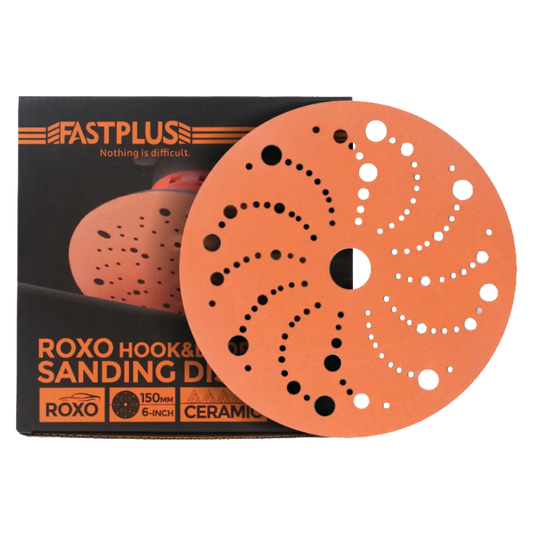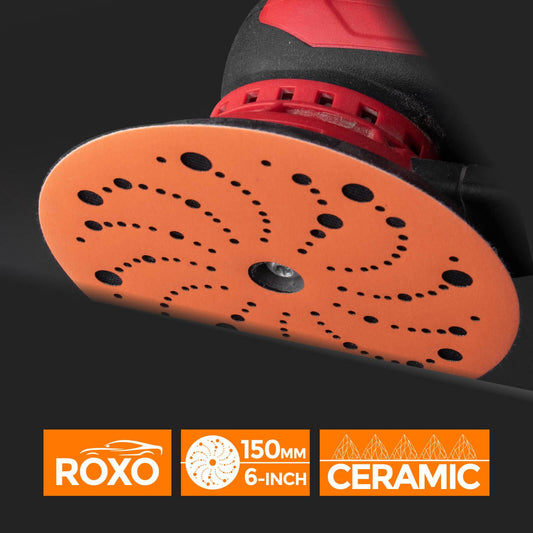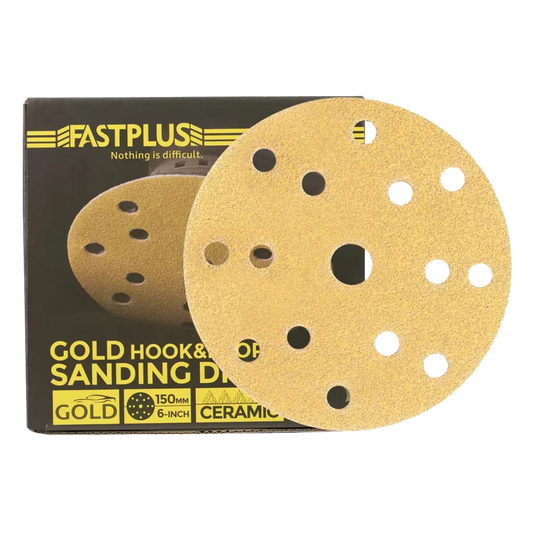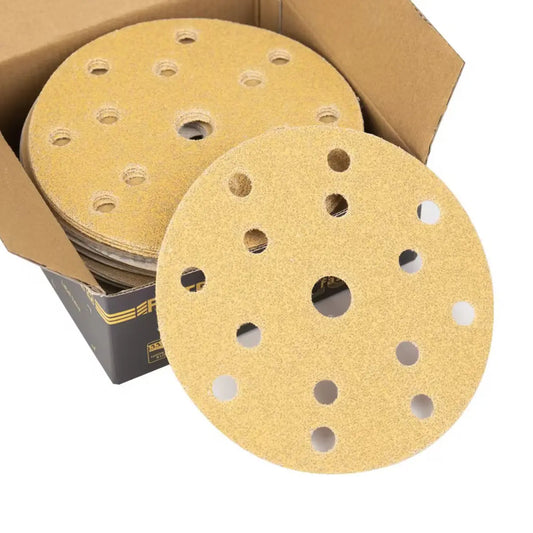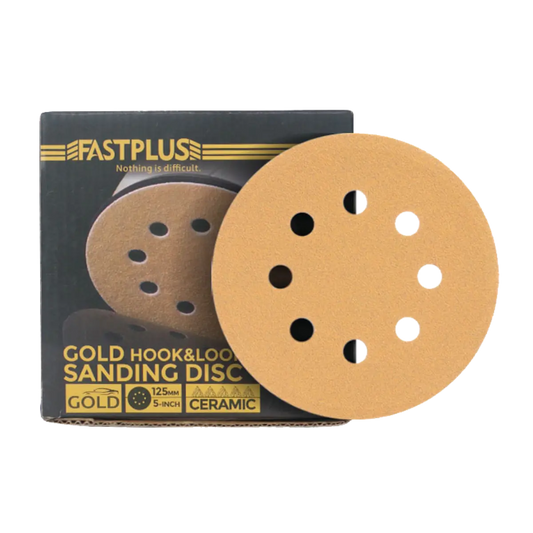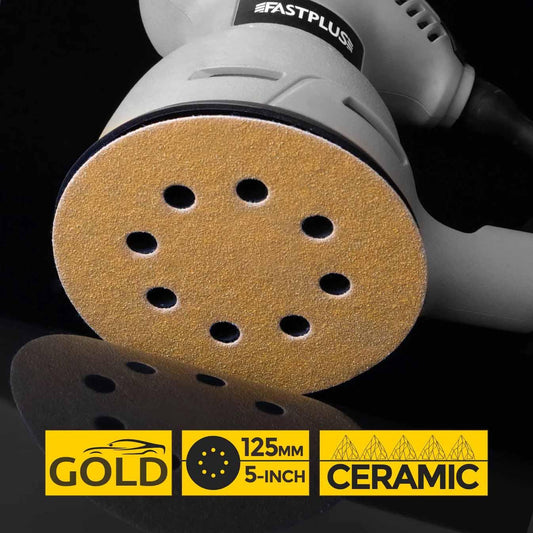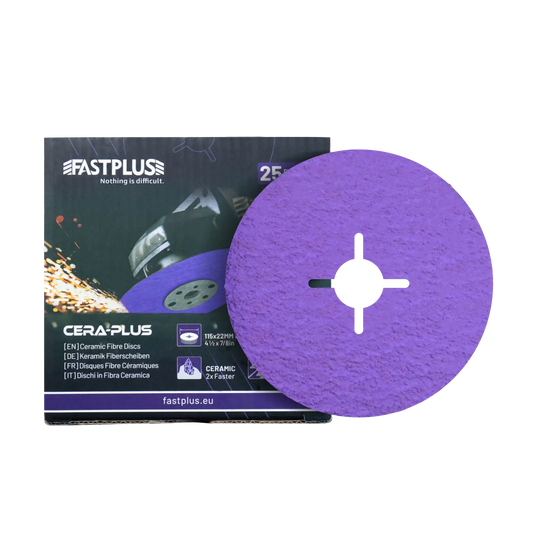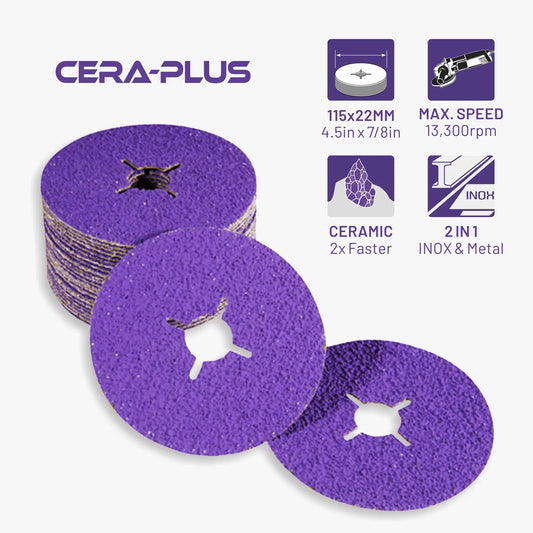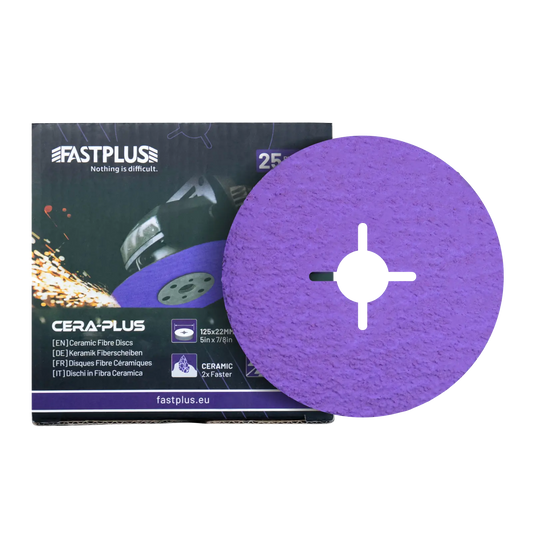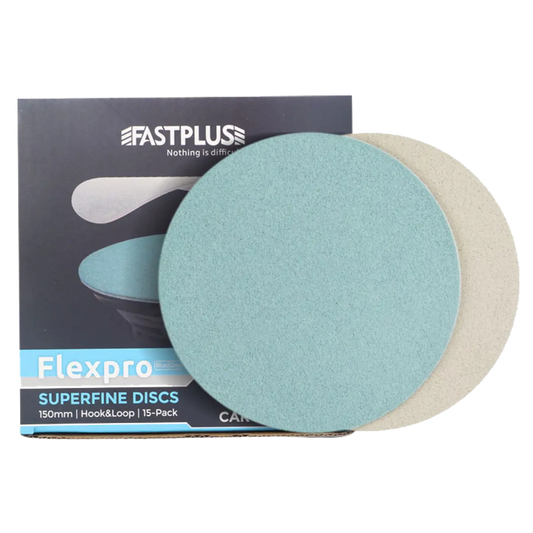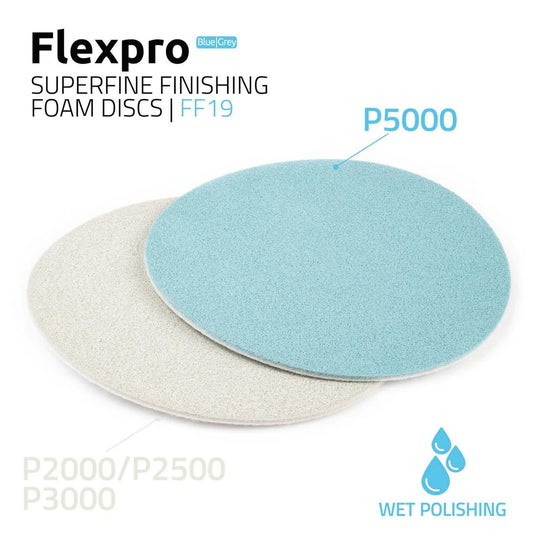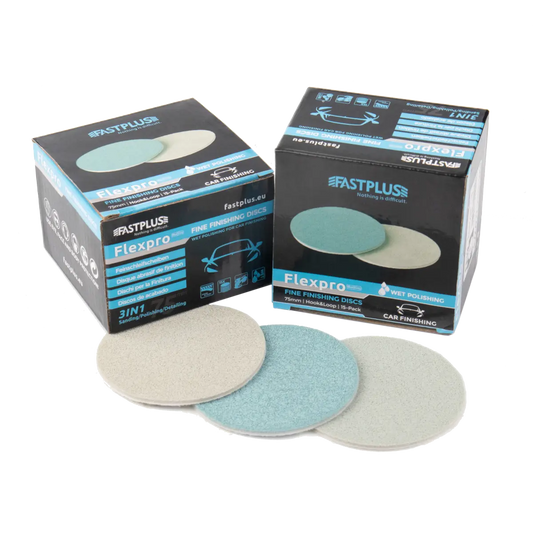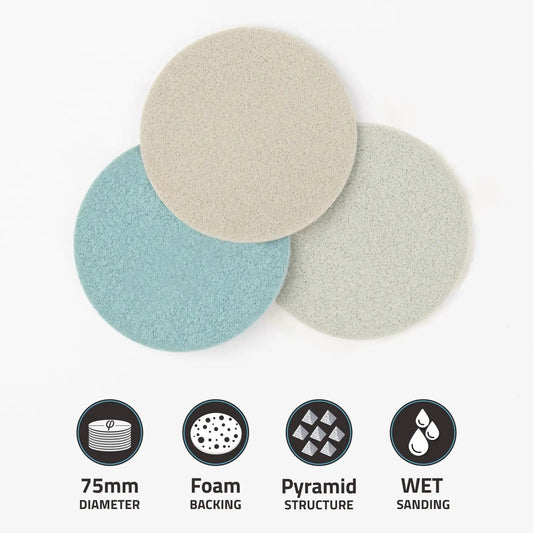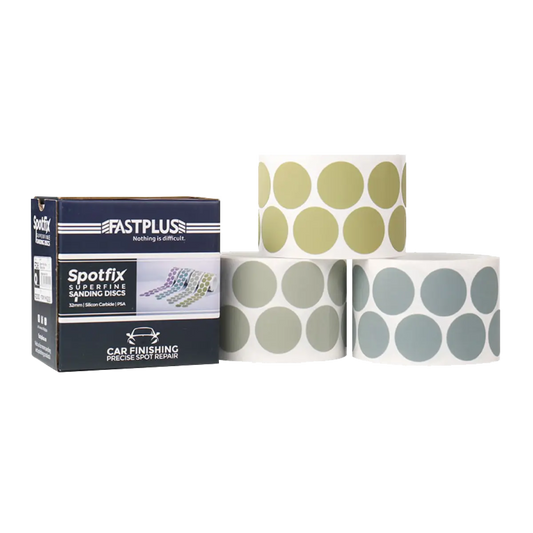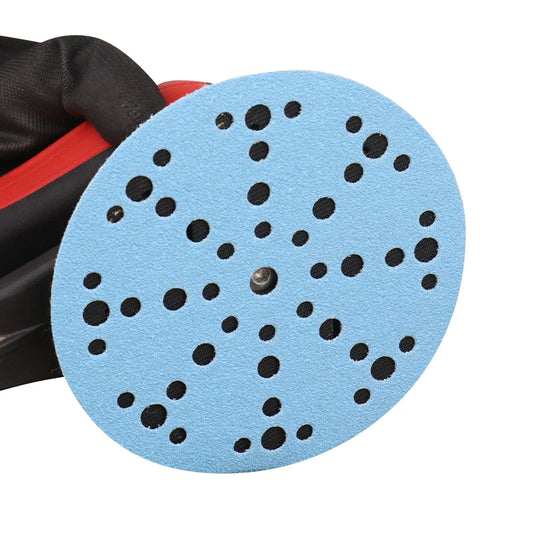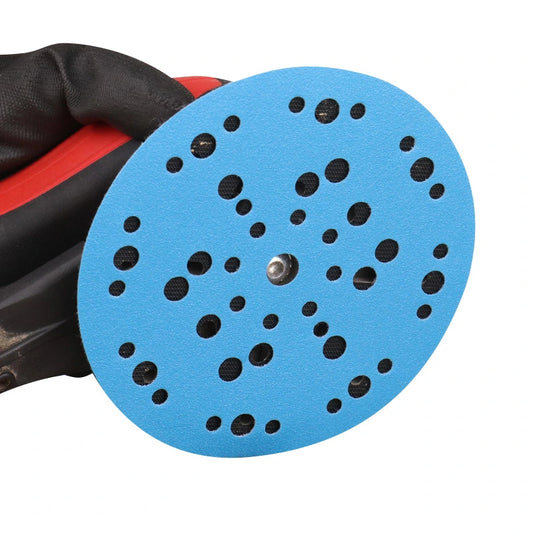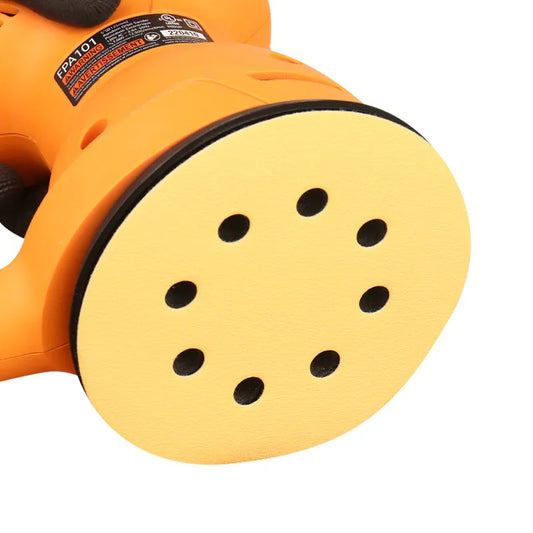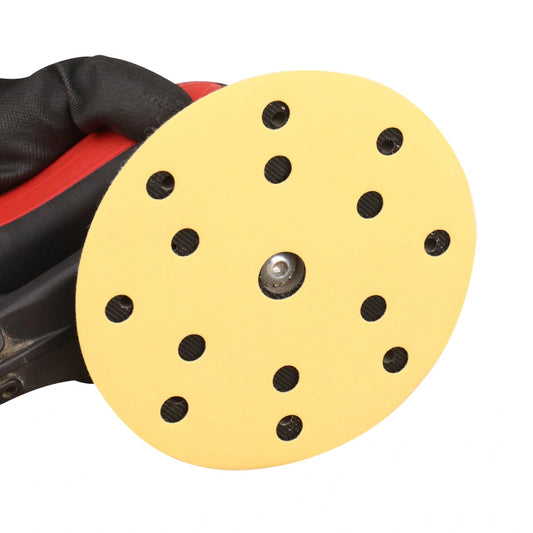Abrasive Sanding Discs
-
Net Sanding Disc 125mm CeraMesh Dust-free Ceramic + Mesh Discs Blue 50-piece
5.0 / 5.0
(23) 23 total reviews
Regular price €32,59Regular priceUnit price / per -
Net Sanding Disc CeraMesh 150mm, Anti-clogging Dust-free Ceramic Mesh Discs Blue 50-pack
5.0 / 5.0
(48) 48 total reviews
Regular price €39,59Regular priceUnit price / per -
PURO Sanding Discs 150mm 119 Holes
5.0 / 5.0
(112) 112 total reviews
Regular price From €26,99Regular priceUnit price / per -
Film Sanding Disc PuroFilm 150mm Ceramic Velcro 15 Holes 50 pieces
4.98 / 5.0
(40) 40 total reviews
Regular price €32,59Regular priceUnit price / per -
ROXO Sanding Discs Ceramic 150mm 119 Holes 50 pieces
4.97 / 5.0
(37) 37 total reviews
Regular price €26,99Regular priceUnit price / per -
GOLD Sanding Discs 150mm 15 Holes 50 pieces
4.99 / 5.0
(71) 71 total reviews
Regular price From €19,69Regular priceUnit price / per -
GOLD Sanding Discs Ceramic 125mm 8 Holes 50 pieces
5.0 / 5.0
(66) 66 total reviews
Regular price From €15,59Regular priceUnit price / per -
Fiber Discs 115mm Cera-Plus Ceramic + Resin Fiber 25 Pack
5.0 / 5.0
(8) 8 total reviews
Regular price From €31,59Regular priceUnit price / per -
Resin Fiber Discs 125mm Cera-Plus Ceramic + Resin Fiber 25 Pack
4.91 / 5.0
(11) 11 total reviews
Regular price From €33,59Regular priceUnit price / per -
150mm Flexpro Fine Finishing Foam Discs FF19 Grip 15-piece
4.99 / 5.0
(72) 72 total reviews
Regular price From €38,59Regular priceUnit price / per -
75mm FlexPro Fine Finishing Foam Discs FF19 Velcro 15 pieces
5.0 / 5.0
(21) 21 total reviews
Regular price From €38,59Regular priceUnit price / per€35,59Sale price From €38,59 -
Spotfix Micro Film Discs, 32mm PSA Daisy Disc for Spot Repair and Smart Repair
5.0 / 5.0
(6) 6 total reviews
Regular price From €18,59Regular priceUnit price / per -
Sanding Discs 150mm x 49 Hole Blue Ceramic for Festool Machine F65 – 50 Pack
Regular price €32,59Regular priceUnit price / per -
Sanding Discs 150mm x 47 Hole Blue Ceramic Adaptative F65 – 50 Pack
Regular price €32,59Regular priceUnit price / per -
Sanding Discs 225mm x Multi-Hole Blue Ceramic for Drywall & Floor Sanding F65 – 25 Pack
Regular price €38,59Regular priceUnit price / per -
Sanding Discs 225mm x 8+1 Hole Gold for Drywall & Floor Sanding F15 – 25 Pack
Regular price €35,99Regular priceUnit price / per -
Sanding Discs 125mm x 8 Hole Yellow Aluminium Oxide F25 – 50 Pack
Regular price From €15,59Regular priceUnit price / per -
Sanding Discs 150mm x 15 Hole Yellow F25 – 50 Pack
Regular price €19,69Regular priceUnit price / per
What is A Sanding Disc?
The sanding disc is a circular abrasive disc that is attached to power sanders or other tools to remove material, light defects, corrosion, paint, and rust from wood, metal, and plastic surfaces. The hook and loop sanding discs and PSA abrasive discs are commonly used and come with different grits, holes, coated grains, backings, and colors. Fastplus is constantly adding more sanding discs into product lines, below is a short buying guide of our sanding discs to help buy the right one for your work.
What are the Types of Sanding Discs?
The sanding discs can be divided into 2 types from the mounting features: One is the hook and loop (velcro) sanding discs, and the other is quick change and PSA/adhesive-backed abrasive discs.
Hook & Loop Sanding Discs: Backed with hook and loop (velcro) system, which allows sanding discs can be attached firmly and removed quickly for better efficiency.
Standard sizes: 125mm, 150mm / 5”, 6”
Holes/ Perforation: No hole, 6/8/9/15/17/multi-holes
Abrasive types: Aluminum oxide, Zirconia alumina, Ceramic
Coating Types: Open coat, semi-open coat, closed coat
Compatible tools: Random orbital sanders, disc sanders or handheld rotary tools.
Common uses: Sanding wood, fiberglass, metal, paint and plastic surfaces
PSA Sanding Discs: Backed with Pressure Sensitive Adhesive (PSA), this kind of self-adhesive abrasive disc can be mounted to the sanding tools easily and quickly. PSA discs are generally made with cloth or paper backing, cloth backed sanding discs are used for heavy-duty sanding, and paper-backed PSA discs are featured as more affordable and lightweight and used for light sanding tasks.
Standard sizes: 125mm, 150mm / 5”, 6”
Holes/ Perforation: No hole
Abrasive Types: Aluminum oxide, Zirconia alumina, Ceramic
Coating Types: semi-open coat, closed coat
Compatible tools: Random orbital sanders, disc sanders, bench sanders, platen disc sanders
Common uses: Grinding, Sanding and finishing of wood, fiberglass, metal, paint and plastic surfaces
Other types of discs: Film Sanding Discs, net/mesh abrasive discs, scuff discs and superfine sanding discs
How to Select the Right Size of Sandpaper Grit?
Distinguishing sandpaper grit sizes is important because not every project requires the same.
In the United States, grit is determined based on a gradation scale established by the Coated Abrasive Manufacturers Institute (CAMI). When shopping for sandpaper, you’ll see numbers such as 80-grit, 100-grit, or 200-grit. Keep in mind:
The higher the number, the smaller the grains and the finer the sandpaper grit.
And, conversely, lower numbers indicate larger grains and overall coarser sandpaper.
On the CAMI scale, sandpaper grit is measured in microns, and to get an idea of how small a micron is, check out a piece of 100-grit sandpaper. The small grains on the sandpaper measure approximately 141 microns in size, which is equivalent to .00550 of an inch. Very small.
Most sandpaper you buy at DIY centers and lumberyards will bear the CAMI scale, but if you order sandpaper online, you may run across sandpaper grit sized by the Federation of European Producers of Abrasives (FEPA). Grit sized with the FEPA scale is indicated by the letter “P” preceding the grit number. While there are too many grit gradations to list, if you’re buying FEPA-sized sandpaper, the following commonly used CAMI sizes will give you an idea of the corresponding FEPA sizes. FEPA sizes are not an identical match to CAMI sizes, but you can get something very close by selecting one of the two closest FEPA numbers.
40-grit (CAMI) sandpaper corresponds closely to (FEPA) P-36 or P-40
80-grit (CAMI) sandpaper corresponds closely to (FEPA) P-80 or F-100
100-grit (CAMI) sandpaper corresponds closely to (FEPA) P-100 or P-120
120-grit (CAMI) sandpaper corresponds closely to (FEPA) P-120 or P-150
220-grit (CAMI) sandpaper corresponds closely to (FEPA) P-180 or P-220
400-grit (CAMI) sandpaper corresponds closely to (FEPA) P-600 or P-800
Generally, the following can be a guide to select the right grit size of sanding discs or sandpapers:
P40 For removing thick layers of rust and lacquer.
P60 For pre-treating unprocessed surfaces.
P80 For correcting heavy areas of unevenness.
P120 For roughening before priming or pickling.
P180 For initial sanding after priming.
P240 For initial wet sanding after priming.
P400 For smoothing filled surfaces.
P600 For fine sanding before painting.
P1000 For final fine sanding before painting.
P1200 For final fine sanding before painting.
P2000 For final fine sanding before painting.
